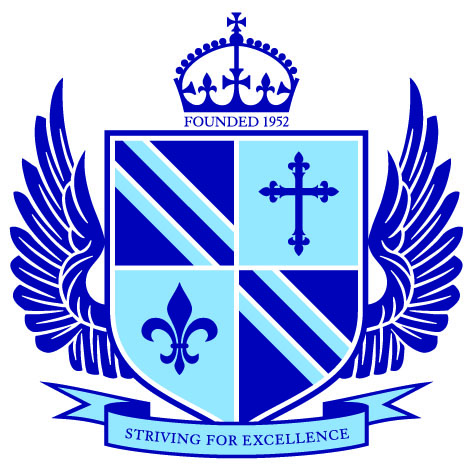E-safety
The online world develops and changes at great speed. New opportunities, challenges and risks are appearing all the time. It is therefore important to focus on the underpinning knowledge and behaviours that can help students to navigate the online world safely and confidently regardless of the device, platform or app.
Underpinning knowledge and behaviours for students include:
- How to evaluate what they see online - making judgements about what they see online and not automatically assume that what they see is true, valid or acceptable.
- How to recognise techniques used for persuasion – recognising the techniques that are often used to persuade or manipulate others. Understanding that this makes people less vulnerable to these techniques and better equipped to recognise and respond appropriately to strongly biased intent or malicious activity.
- Online behaviour – understanding what acceptable and unacceptable online behaviour look like - that the same standard of behaviour and honesty apply on and offline, including the importance of respect for others.
- How to identify online risks – identifying possible online risks, thinking through the consequences of acting in different ways and deciding on the best course of action.
- How and when to seek support – understanding safe ways in which to seek support if they are concerned or upset by something they have seen online.
The school teaches about E-safety through our PSHE programme. We also run specific filtering software, Securus, which is an industry standard monitoring application designed to protect students from cyberbullying, online grooming, explicit images, harmful websites and other threats.
Information for students regarding E-safety is on the Student page - IT Access.
Information for Parents and Carers
The following advice is from Thinkuknow, the national online safety education programme from CEOP, the online child protection command of the National Crime Agency. Thinkuknow helps parents, carers, teachers and others keep children safe from sexual abuse, offering learning activities, advice and support for children and young people aged 4-18 and their families.
8 steps to keep your child safe online
- Explore together: Ask your child to show you their favourite websites and apps and what they do on them. Listen, show interest and encourage them to teach you the basics of the site or app.
- Chat about online safety little and often: Young people are likely to want to explore new apps and websites this month, whether that’s for learning or for fun. Take this opportunity to talk to them about how to stay safe on these new services, and in general. Ask if anything ever worries them while they’re online. Make sure they know that if they ever feel worried, they can get help by talking to you or another adult they trust.
- Help your child identify trusted adults who can help them if they are worried: This includes you and other adults at home, as well as adults from wider family, school or other support services who they are able to contact at this time. Encourage them to draw a picture or write a list of their trusted adults.
- Be non-judgemental: Explain that you would never blame them for anything that might happen online, and you will always give them calm, loving support.
- Talk about how their online actions can affect others: If your child is engaging with others online, remind them to consider how someone else might feel before they post or share something. If they are considering sharing a photo/video of somebody else, they should always ask permission first.
- Parental controls: Make use of the parental controls available on your home broadband and any internet enabled device in your home. You can find out more about how to use parental controls by visiting your broadband provider’s website.
- Direct your child to age appropriate information about relationships and sex: It’s natural for young people to start exploring their sexual feelings online and adolescents are more inclined to take risks. It’s important to understand this and to talk to your child in a positive way. Thinkuknow, Brook, The Mix and Childline all provide age appropriate information about relationships and sex that you can signpost your child to.
- Make sure they know about CEOP: Young people can report a concern about grooming or sexual abuse to CEOP at www.ceop.police.uk/safety-centre/ and get support from a specialist Child Protection Advisor.
Key Resources for Parents and Carers
There are many resources available to inform parents and carers about E-safety. Below are some links that parents may find useful.
Thinkuknow Website - Advice for parents and carers.
Ann Craft Trust Website (ACT) - Act and the Marie Collins Foundation have collaborated to produce the resource ‘Helping my autistic child stay safe online’.
Childnet Website - Know IT All for Parents is a unique interactive e-safety guide containing advice and information for parents and carers.
Family Online Safety Institute Website (FOSI) - The Good Digital Parenting resources include videos, tip sheets, resources, blogs, and more.
Internet Matters Website - This site has a range of guides and resources aimed at helping parents and carers keep their children safe online.
Lincolnshire Safeguarding Children Partnership (LSCP) - YouTube Channel. This includes talks aimed at parents and carers on online safety and a number of shorter videos on specific topics relating to e-safety.
National Society for the Prevention of Cruelty to Children (NSPCC) - Online Safety Guides for Parents.
Parents Against Child Exploitation (PACE) Website - Information and support for parents and carers relating to child exploitation.
Parents Protect Website - Information and support for parents and carers to protect children from exploitation.
Parent Zone Website - Expert information for parents and carers about building their child’s resilience both online and off. Produced by NCA-CEOP and Parent Zone.
